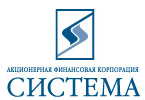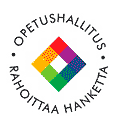|
|
|
 |
Virtual Tours round the Russian Museum The Rossi Wing |
     |
The Russian Museum
»
The Rossi Wing
»
Room 11
Room 11Khokhloma paintwork, Gorodets designs and Shemoksa birch-bark carvings of the 20th Century Room XI showcases examples of Khokhloma paintwork, Gorodets designs and Shemoksa birch-bark carvings, all created in the twentieth century. The world-famous “Khokhloma” develops today in two centres in Nizhny Novgorod Region – in the town of Semenov and in the villages around Semino in Koverninksy district. For Khokhloma paintwork, the twentieth century was a golden age. In the 1930s and 1940s, Khokhloma paintwork decorated traditional objects. In the following decades, the assortment of works grew markedly wider. Masters began to create multi-object sets for various purposes (vessels for holding dumplings, soup, juices or jam), influencing not only the forms and dimensions of the objects, but also their choice of ornamentation. Images of fantastic birds, fish, garden and wild berries intermingled with floral patterns. Unlike the elegant decor of works created in Semenov, Khokhloma from the Koverninksy district is closer to the rural traditions of household utensils (bowls, loving-cups and glasses). In the town of Gorodets and the neighbouring villages in Nizhny Novgorod Region, the “Gorodets” craft is based on the traditions of decorating the bottoms of distaffs in the second half of the nineteenth century. The decorative plate by A. Y. Konovalov (1920–1993) – demonstrates the style of Gorodets designs in the 1950s and 1960s, employing the motifs of traditional birds and the “Gorodets rose.” Birch-bark fretwork flourishes today in the town of Veliky Ustyug in Vologda Region, which cherishes the traditions of ornamentation – free variations of spiral twists with a rosette inside. The works of contemporary masters are celebrated for their masterly fretwork and rich ornamentation, which combines traditional floral motifs with genre subjects and compositions, expanding and enhancing the possibilities of this particular form of art. |
The Project “The Russian Museum: the Virtual Branch” |